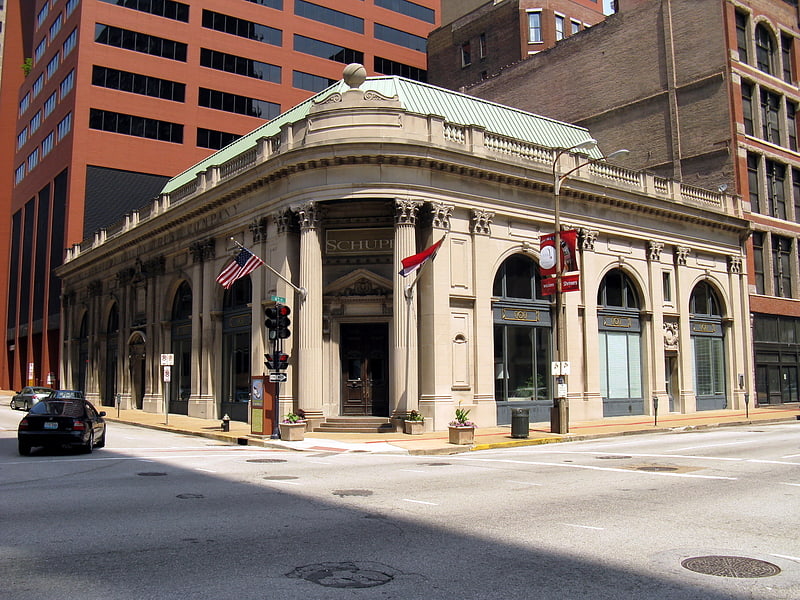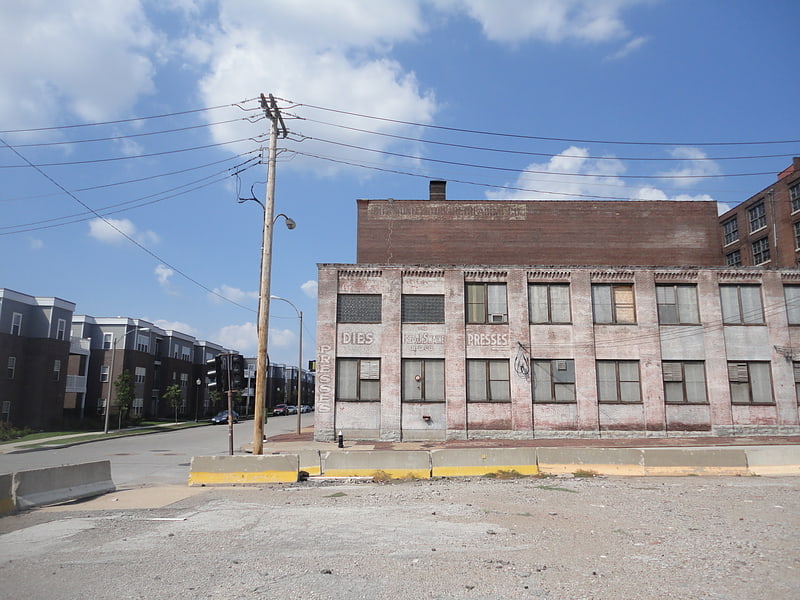Discover 5 hidden attractions, cool sights, and unusual things to do in East St. Louis (United States). Don't miss out on these must-see attractions: Gateway Motorsports Park, Mississippi Valley Trust Company Building, and Laclede Gas Building. Also, be sure to include Pennsylvania Avenue Historic District in your itinerary.
Below, you can find the list of the most amazing places you should visit in East St. Louis (Illinois).
Table of Contents
Gateway Motorsports Park

Car racing track in Madison, Illinois. World Wide Technology Raceway is a motorsport racing facility in Madison, Illinois, just east of St. Louis, Missouri, United States, close to the Gateway Arch. It features a 1.25-mile oval that hosts the NASCAR Cup Series, NASCAR Camping World Truck Series, and the NTT IndyCar Series, a 1.6-mile infield road course used by the SCCA, Porsche Club of America, and various car clubs, and a quarter-mile drag strip that hosts the annual NHRA Midwest Nationals event.
The first major event held at the facility was the CART series on Saturday May 24, 1997, the day before the Indy Racing League's Indianapolis 500. Rather than scheduling a race directly opposite the Indy 500 (as they had done in 1996 with the U.S. 500), CART scheduled Gateway the day before to serve as their Memorial Day weekend open-wheel alternative without direct conflict. For 2000, the race was moved to the fall. In 2001, it was dropped from the CART series schedule, and switched alliances to the Indy Racing League. After mediocre attendance, the event was dropped altogether after 2003. It was later re-added to the schedule for 2017.
In 1998, the then named Gateway International Raceway was purchased by Dover Motorsports, a group that also owned what is now Memphis International Raceway, along with the Nashville Superspeedway and Dover International Speedway. On November 3, 2010, Dover Motorsports would close the facility, citing the Financial crisis of 2007–2008 as a major contributor. On September 8, 2011, the facility would be re-opened by local St. Louis real estate developer and former Indy Lights driver Curtis Francois and renamed Gateway Motorsports Park, saving the facility days before being scrapped. Under its new leadership, World Wide Technology Raceway went from the brink of demolition to one of the very few tracks in the United States to host the NASCAR Cup Series, NTT IndyCar Series, and NHRA Camping World Drag Racing Series all during the same year.[1]
Address: 700 Raceway Blvd, 62060 Madison
Mississippi Valley Trust Company Building

The Mississippi Valley Trust Company Building is a historic building in St. Louis, Missouri, USA.[2]
Laclede Gas Building

Skyscraper in St. Louis, Missouri. The Laclede Gas Building is a 31-story, 122 m skyscraper located at 720 Olive Street in Downtown St. Louis, Missouri. It was designed by the Emery Roth & Sons architecture firm, and was built between 1967 and 1969 for the Laclede Gas Company, which had outgrown its 10-story building at 1017 Olive Street. The Laclede Gas Company vacated the building in March 2015, after 45 years in the space. The building has since been converted to mixed-use, and presently consists of both office and residential spaces.
Uniquely, all power for the building is generated in-house using natural gas burning generators, and therefore is not interconnected to the local electricity provider.[3]
Pennsylvania Avenue Historic District

The Pennsylvania Avenue Historic District is a residential historic district located on the 1000 block of Pennsylvania Avenue in East St. Louis, Illinois. The district includes four houses as well as the sites of two demolished homes. The historic district was once a prestigious area of the city known as "Quality Hill", and it contained well-built homes designed in popular architectural styles. However, East St. Louis entered a severe decline due to the loss of its industry, racial discrimination, and a corrupt and mismanaged city government. The historic district suffered the same fate as the city; the district is marked by vacant lots and abandoned buildings, and all but one of the houses had been vacated or demolished by the 1970s.
As of 1979, four houses were still standing in the district; all four are contributing buildings. The Joyce House, located at 1005 Pennsylvania Avenue, is a Renaissance Revival house built in 1901. The Katherine Dunham Museum now occupies the house; it is the only house in the district which is still occupied. The John A. Campbell House, located at 1023 Pennsylvania Avenue, is a 1907 Queen Anne house designed by Albert B. Frankel. The Malburn M. Stephens House, located at 1010 Pennsylvania Avenue, is a Georgian Revival house built in 1902; its namesake owner served as mayor of East St. Louis for 22 years. The Thomas L. Fekete House, located at 1018 Pennsylvania Avenue, is a vernacular house built in 1896. The sites of two demolished houses, the Reid-Nims House and Derleth-McLean House, are included in the district as non-contributing sites.
The district was added to the National Register of Historic Places on July 27, 1979.[4]
The Bottle District

The Bottle District is a six-block, 17-acre area north of Downtown St. Louis, Missouri, that is being redeveloped as a mixed-use entertainment and residential district. It sits north of the city's convention center and west of Laclede's Landing.
The area is part of the old Kerry Patch neighborhood, which was home to thousands of Irish immigrants in the 19th century. The neighborhood gradually became more industrial and was noted in the 1920s for its animal stockyards and bottling companies.
In 2004, longtime neighborhood business McGuire Moving and Storage Company, announced plans to redevelop the district as an entertainment destination. Noted architect Daniel Libeskind was hired to design the district. The Ghazi Company of Charlotte, North Carolina is the co-developer.
A groundbreaking ceremony was held on September 27, 2005, with plans for the first phase to open in 2007. The plans called for a Rawlings Sports museum, a Grand Prix Speedways kart-racing center, a boutique bowling alley, 250 residential units, and several restaurants. The first phase of the development was anticipated to cost $290 million, to be funded in part by $51.3 million in tax increment financing.
But that effort stalled. In late 2011, the St. Louis Board of Aldermen approved the transfer of the unused $51.3 million to a new developer, NorthSide Regeneration LLC. The deal would see the previous investment group, including developers Larry Chapman and Clayco, sell the site to NorthSide for an undisclosed amount that documents with the city suggest would be $3 million; all three were to work to find tenants and build on the site. Construction on a $190 million office and residential project was to begin in summer 2012.
Several explanations for the name of the Bottle District have been given. It has been suggested that the name honors the longstanding connection between St. Louis and the brewing and bottling industries. Others have suggested that the name comes from bottles found buried on the property, or the many broken bottles found in the neighborhood. Finally, the site is noted for a decades-old, 34-foot-tall (10 m) advertisement for Vess Soda, shaped like a bottle, which the developers intend to restore during the redevelopment. Location: 520 O'Fallon St. 38°38′12″N 90°11′12″W[5]